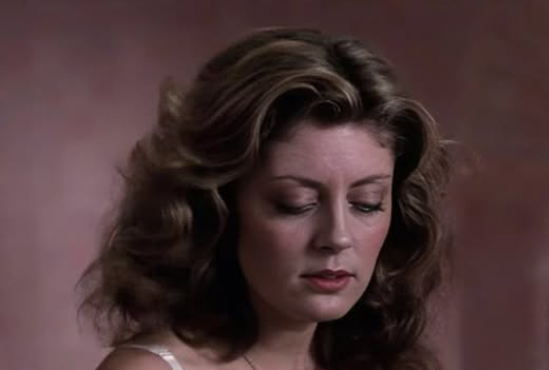Sally Field’s portrayal of Norma Rae wasn’t just acting—it was an immersion into the pain, uncertainty, and inner battles that defined one of American cinema’s most memorable performances. When the film debuted in 1979, audiences saw a determined textile worker standing atop a table, holding a cardboard sign proclaiming “UNION.” They witnessed courage, determination, and a woman demanding justice. What went largely unseen was the struggle behind the camera: the bruised ribs, the relentless self-questioning, and a boyfriend who attempted to undermine her ambitions at every opportunity.
Norma Rae wasn’t merely a movie—it was a spotlight on workers’ rights that many now take for granted: minimum wage, safe working conditions, healthcare, weekends off, child protection, and the simple dignity of fair treatment. Unions shaped the foundation of life for millions, and Field embodied the fight against a system intent on keeping her silent. Her performance didn’t just captivate audiences; it reshaped her own perception of herself.
Before this role, Hollywood often dismissed Sally Field. She was “Gidget,” “The Flying Nun,” a sweet, harmless face—pleasant, but never commanding. Field knew she had more to offer, yet attempts to break free of that mold were continually blocked. When Norma Rae’s script came into her hands, she recognized it as an opportunity to reclaim herself.
Her personal life, however, complicated matters. Burt Reynolds, her boyfriend and one of Hollywood’s leading stars, was openly critical. He mocked the role, sneering, “Now you’re an actor? Letting ambition take over?” At one point, he told her, “No woman of mine will play a whore.” Those words lingered—small, bitter, and designed to keep her in place.
Field accepted the part anyway.
The role demanded physical sacrifice. The factory where they filmed was no movie set—it was an actual Alabama textile mill, deafening and vibrating so intensely it felt alive. Field and co-star Beau Bridges worked alongside real employees to learn the rhythm of their work. The heat, noise, and labor seeped into her body. Field later described two hours in that weaving room as equal to eight hours anywhere else. By the end of filming, everyone on set had newfound respect for the people who endured those conditions daily.
But Field didn’t merely adopt the environment—she absorbed the lives around her. She spent days walking the mill in worn clothes, observing, listening, blending in. She watched the exhaustion, humor, and pride of people who had spent decades there, and it informed a character that felt authentic, not staged.
This immersion bled into Field’s personal life. As filming progressed, she grew bolder, more assured, unwilling to shrink herself. Reynolds didn’t like it. On the last day of shooting, he proposed with a diamond ring. She refused. It didn’t feel genuine to her, a reminder that his idea of her life didn’t match her own reality.
Meanwhile, the real Norma Rae—Crystal Lee Sutton—lived a life far harsher than the film could portray. Born in 1940 in a segregated Southern mill town, she grew up on the wrong side of privilege. Workers’ children were overlooked while managers’ children were pampered. Sutton entered the mills young, lost her husband at twenty, raised three children on near-poverty wages, and endured relentless exploitation.
In 1973, she was fired from J.P. Stevens for union organizing. Before leaving, she grabbed a cardboard sign, wrote “UNION” boldly, and climbed atop a table so all workers could see. Machinery slowed, then stopped. Silence fell. That act became the centerpiece of the film, one of the most iconic moments in cinema history.
The movie softened some realities, which Sutton didn’t fully appreciate. She wished it had been grittier, more documentary-like. She never profited from the book or the film, only receiving a small settlement of $52,000, which she used to pay debts and buy a modest car for her supportive husband. Her courage, however, remained extraordinary.
Field and Sutton met just once in 1980 in California, but the encounter was meaningful. They shared laughter and stories about their children, forging a brief but profound connection. Two women from vastly different lives were linked by a tale of resilience and dignity.
When Norma Rae premiered at Cannes, Field cried as she watched the audience’s reaction. Every fear, every doubt, every perceived limitation dissolved in that moment. Reynolds, however, refused to attend, dismissing it as a waste of time. Field went with friends instead, celebrated with champagne, and embraced the joy that Reynolds had denied her.
Then came the accolade: Best Actress. Hollywood finally recognized the power she had long demonstrated.
Decades later, Norma Rae remains a seminal labor film. Field’s portrayal—fierce, vulnerable, authentic—still resonates. Behind the acclaim stood a woman who fought as hard in her personal life as she did onscreen. Like the character she played, Sally Field refused to remain small. She rose because she refused to be diminished.
